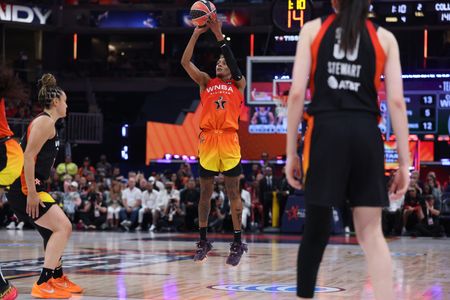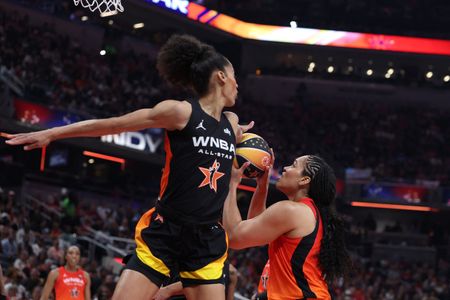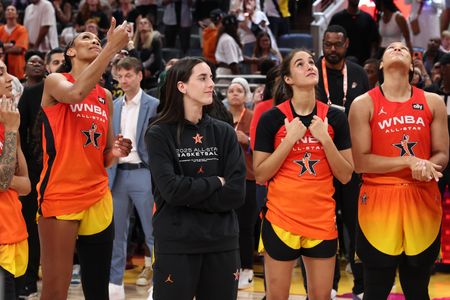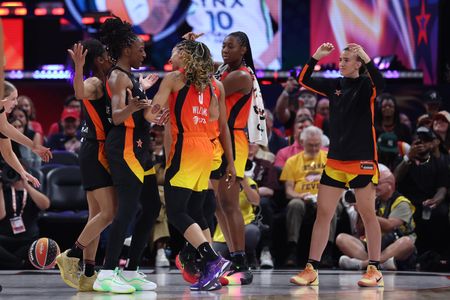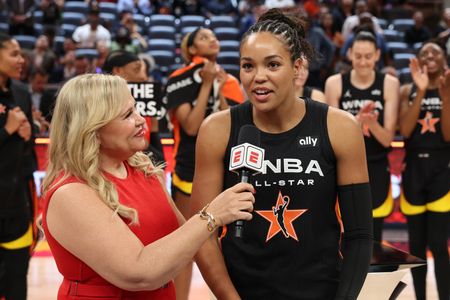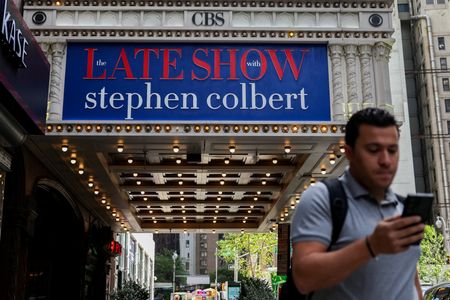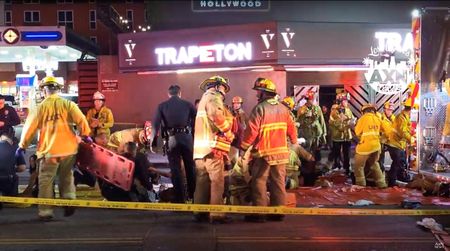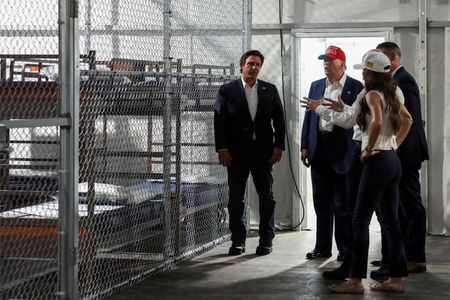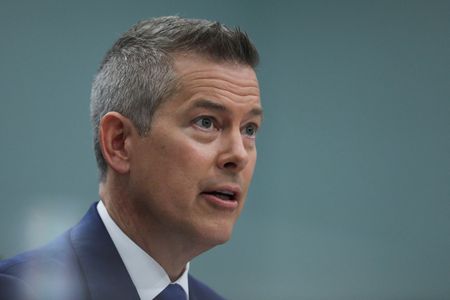By Amy Tennery
INDIANAPOLIS (Reuters) -WNBA players wrested the spotlight of the All-Star weekend to get the fans on their side amid intensifying labor talks with the league, as the annual showcase of the sport’s top talent celebrated an influx of new fans.
Players took the court in Indianapolis wearing shirts that read “Pay Us What You Owe Us,” after a meeting to discuss a new collective bargaining agreement (CBA) on Thursday that union members said was a missed opportunity.
Fans got the message, chanting “Pay them!” as Commissioner Cathy Engelbert appeared on the court at Gainbridge Fieldhouse after the final buzzer.
“To have the fans backing us – I think it means everything,” said Napheesa Collier, the All-Star Game MVP.
It set the tone for the coming months, with the current CBA set to expire on October 31, after a two-day celebration of a league on the rise.
Advertisements featuring the WNBA’s top players blanketed the city center and jersey-wearing fans poured into town, signaling a new era for the league with national viewership up 23% year-over-year for the first half of the season.
The only dent to the enthusiasm appeared to be the absence of Indiana Fever sharpshooter Caitlin Clark, who was expected to be the biggest attraction at the annual showcase in her home market but had to sit out the game injured.
But behind the scenes, players voiced frustration over what they felt was poor progress in their labor negotiations with the league, after opting out of their current collective bargaining agreement (CBA) early.
The Women’s National Basketball Players Association issued a stern statement after the two sides met in Indianapolis on Thursday.
A day later, players fumed over the meeting that union President Nneka Ogwumike called a “missed opportunity,” and she said the league had taken five months to respond to the WNBPA’s last proposal.
“I feel as though, if there was a response to our proposal that reflected any type of change that incorporated what we had proposed, then perhaps five months would have made a little bit more sense,” she told reporters.
Engelbert struck a more positive tone, saying she felt the meeting with players had been productive.
“(I’m) really optimistic that we’ll get something done, that it’ll be transformational,” said Engelbert, who has overseen a remarkable period of growth for the league since taking the reins in 2019.
Key issues targeted by players include an increase in revenue sharing, with male counterparts in the NBA now taking home about half of basketball-related revenue, a far greater share.
Fixed costs almost certainly take a larger share of the WNBA’s revenue, said Andrew Zimbalist, a professor emeritus of economics at Smith College, who said that 50% was nonetheless still “a perfectly feasible target for the women.”
“The players have every reason to be aggressive here,” said Zimbalist, who has consulted in the sports industry for players, teams and leagues.
“I wouldn’t expect them to reach a 50% target immediately, but to reach it over two or three years seems entirely plausible.”
Any disruption to the 2026 season stands to dent the tremendous momentum the league now enjoys, with two new clubs set to debut next year in Portland and Toronto.
(Reporting by Amy Tennery in Indianapolis; Editing by Clarence Fernandez)

